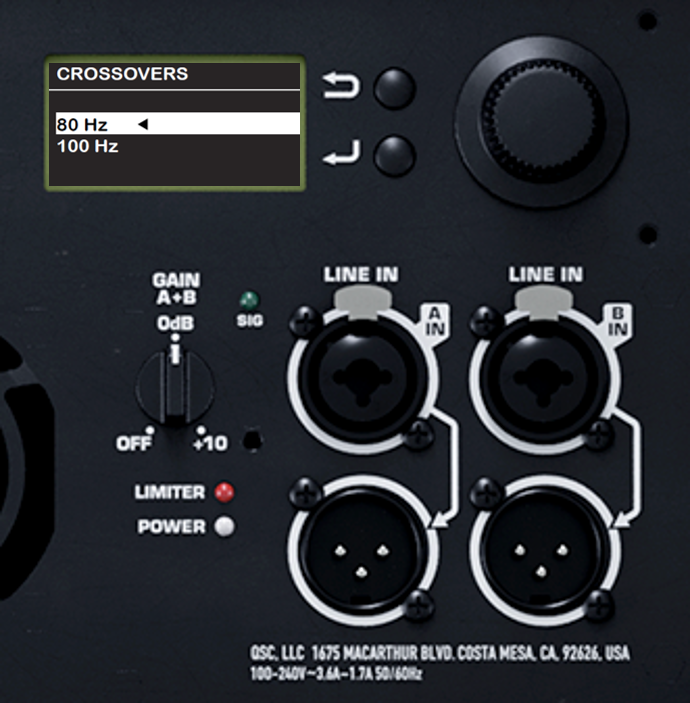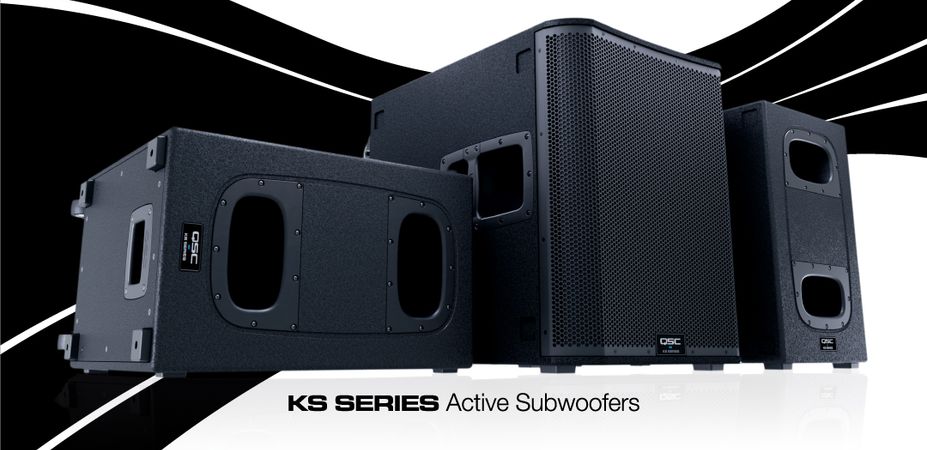All three KS Series Active Subwoofers feature powerful DSP, which allow you to adjust a number of useful parameters. Among these is the crossover frequency (low-pass). Now, to perfectly match your KS active subwoofer with your top active loudspeakers, you need to choose a suitable crossover frequency (80 or 100 Hz) – and apply the correct setting to both subwoofer and top loudspeakers. However, what happens if you don’t? Well, let’s look at it:
- Subwoofer set at 80 Hz, top loudspeaker set at 80 Hz: very good summation of both responses, with powerful bass. Additionally, the low 80 Hz crossover setting reduces low frequencies localization cues.
- Subwoofer set at 100 Hz, top loudspeaker set at 100 Hz: smooth crossover summation as well as additional headroom for the top loudspeaker, which reproduces a narrower audio bandwidth.
- Subwoofer set at 100 Hz, top loudspeaker set at 80 Hz: now both units are reproducing the same energy between 80 Hz and 100 Hz, generating extra bass level.
- Subwoofer set at 80 Hz, top loudspeaker set at 100 Hz: the crossover region will not display a flat, smooth frequency response. There will be a notch of -5 dB centered around 90 Hz, which will translate to a loss in bass reproduction.
So, the appropriate adjustment of your crossover is important to get the best out of your QSC active subwoofers and loudspeakers.


I wanted to thank you for this wonderful read!! I definitely loved every bit of it.
I’ve got you bookmarked to look at new things you post…
How bout speakers at 125 hz / subs at 80
Thanks for your message. A top loudspeaker high-pass set at 125 Hz and a subwoofer low-pass set at 80 Hz will induce a loss in low frequency reproduction level between these two frequuencies, as discussed in the article. The wider the frequencies are set apart, the more LF loss you will perceive. Hope this clarifies your question. Thanks for reading! Best regards.
My question concerns the Presets on the K.2 mid-high boxes (K10.2s in particular.) I like the “Studio Monitor” preset best, I use it for live shows. But obviously some low end has been filtered out. How do I know where to set the crossover on my subs? WHAT IS THE EXACT ROLLOFF THAT’S BEING USED ON EACH PRESET? WHY DOESN’T QSC SHARE THIS INFO? WHO CARES IF IT’S “PRIORITY INTELLECTUAL PROPERTY” – WE PAID FOR THE BOXES, WE NEED TO KNOW!
Hello and thanks for your note. The Studio Monitor preset on QSC K.2 Series has been designed to provide a very flat frequency response across the full bandwith of the loudspeaker. There is actually no LF that is filtered-out, but a rather flat bass response that is implemented. K2 Series feature 11 different presets, and each one has different set of contour equalization, which means that there are differences in response magnitude (levels), but no changes in the actual loudspeaker LF roll-off. The lowest possible high-pass setting is 80 Hz (applicable with all presets), with 100 and 125 Hz also available. So, the question is to find out what low-pass setting is available with your subwoofer and find a matching crossover frequency in the 3 choices provided on K.2 Series. The bottom line is that you can mix and match any preset with any crossover setting, without any loss of low frequencies. Hope this is helpful, and thanks for reading. Best regards.
I just bought a DBX Drive Rack PA2. I am trying to set up the cross over with my k8.2 and ks112. Do you know the settings for setting up an external crossover. Any help would be great.
Hello Rudolf, and thanks for your question. Whatever model of external crossover you use, the most important principle to follow is to set both low-pass and high-pass at the same frequency with the same roll-off slope (24 dB/octave, etc). You can select 80 or 85 Hz for K8.2 and KS112, and the system will work very well. Hope this is useful. Best regards.